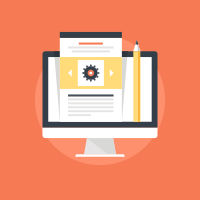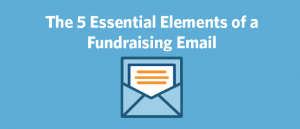There’s a lot of content out there in sales blogging land about the automating the sales process when trying to find the next opportunity. However, the most important aspect is crafting a message that speaks to the individual. You want to make them feel like ‘Yes, this is an important issue for me. This person understands my challenge and can help me resolve it.’ You want to answer the prospect’s questions of ‘Why you, why now?’
There is no doubt that creating that personalized message has a huge impact, but it also takes a huge amount of time. This begs the question, “How do you scale your personalization efforts to reach more prospects and open more conversations?”
Here is 5-step guide to personalize your sales email messaging at scale.
1 – Segment by Ideal Customer Profile fit
You should have a good understanding of who fits your ideal customer profile (ICP); the customer most likely to purchase your product or service, who would respond to a similar value proposition. There could be a number of factors you have identified to fill out this profile – title, industry, company, geography, etc.
Not all of your prospects are created equally. ‘A players’ on your team regularly rank their leads by level of strategic importance and confidence in their fit for your business. For example:
- A, 10% of target customers
- B, 30% of target customers
- C, 60% of target customers
Do this segmentation either in a spreadsheet or your CRM.
2 – Create the format for the email
To create a personalized message at scale, you need to create a framework to insert your personalization and value proposition.
The latest research from companies like InsideSales.com point towards the need for multi-touch- campaigns to reach the prospect, using a framework creates an easy way to test and iterate each messages performance.
An example may be:
3 – Build out targeted value proposition – Answer the ‘Why you?’
Personalizing at scale requires you to create value proposition that will appeal to all of your prospects and provides a framework on which you can hang your custom variables. Typically these statements make up the bulk of the email, educating the prospect on potential challenges you can solve or providing social proof as to why they need to speak with you.
Often the most compelling messages involve sharing the success of a current customer how tried your solution and received a clear return on investment within a specific time frame. For example, Customer X was able to increase sales by 27% within the first 3 months.
4 – Do the research to populate {Personalization 1}
This is the first custom variable after the prospect’s name. Research is the most important part of the process and the most time intensive. That means you need to allocate the appropriate time in proportion to the importance of that lead.
For example, you might allocate your time by as follows:
A Grade Leads: These require a highly personal approach that merits targeted information about the individual – 10+ minutes per lead.
B Grade Leads: Your time can be focused on researching a company or gathering competitor intelligence – 10 minutes spread across a small pool of leads.
C Grade Leads: You can afford to be less personal there. Look for some industry specific news that can be positioned as important and ask for a referral – 20 minutes across the a larger pool of leads
The research involves you searching through the social media, news outlets and company reports to find the specific to the segment or the individual.
Today there are many tools and technology to make this easier, such as Rapportive and Discover.ly. NeedNudge is a new one that looks interesting.
‘A Players’ on your team are always looking for new ways to scale this element of their job. One popular method is to document your research process and look for outsourced partners that can do the research for you. Companies like UpWork, Elance, and Freelancer are great resources to help recruit outsourced partners.
Enter the research into a new column in your leads table in PersistIQ, spreadsheet or specific field in your outbound sales platform.
5 – Time to execute your campaign
Traditionally you had two options to execute these campaigns:
- Leverage marketing automation technology to send bulk emails which provided minimal customisation capability but great analytics on success.
- A manual and tedious process involving a spreadsheet, your mail application and a lot of time.
Previously, a sales rep had to decide between either convenience and speed or personalization and control.
However, it’s important to note that there’s a profound difference between marketing automation and sales automation.
Technology has evolved with a plethora of sales driven outbound email automation solutions, and companies like PersistIQ are at the forefront. PersistIQ enables you to efficiently increase your outbound email activity, provide the capability to personalize and then measure performance.
Once you’ve built out your campaign, it’s time to review your emails and press send!
Conclusion
Hopefully, these 5 steps help set you up to scale your outbound email activity while providing the personalization you need to cut through with your prospects. Remember, this is just the start of the process. You need to continually test and iterate your value proposition, content and personalization variables to optimize your open rates, responses and deals won.
Good luck & happy selling!
Want to improve your outbound sales with more personalized emails and campaigns? Let us show you how with PersistIQ.
Digital & Social Articles on Business 2 Community(103)







